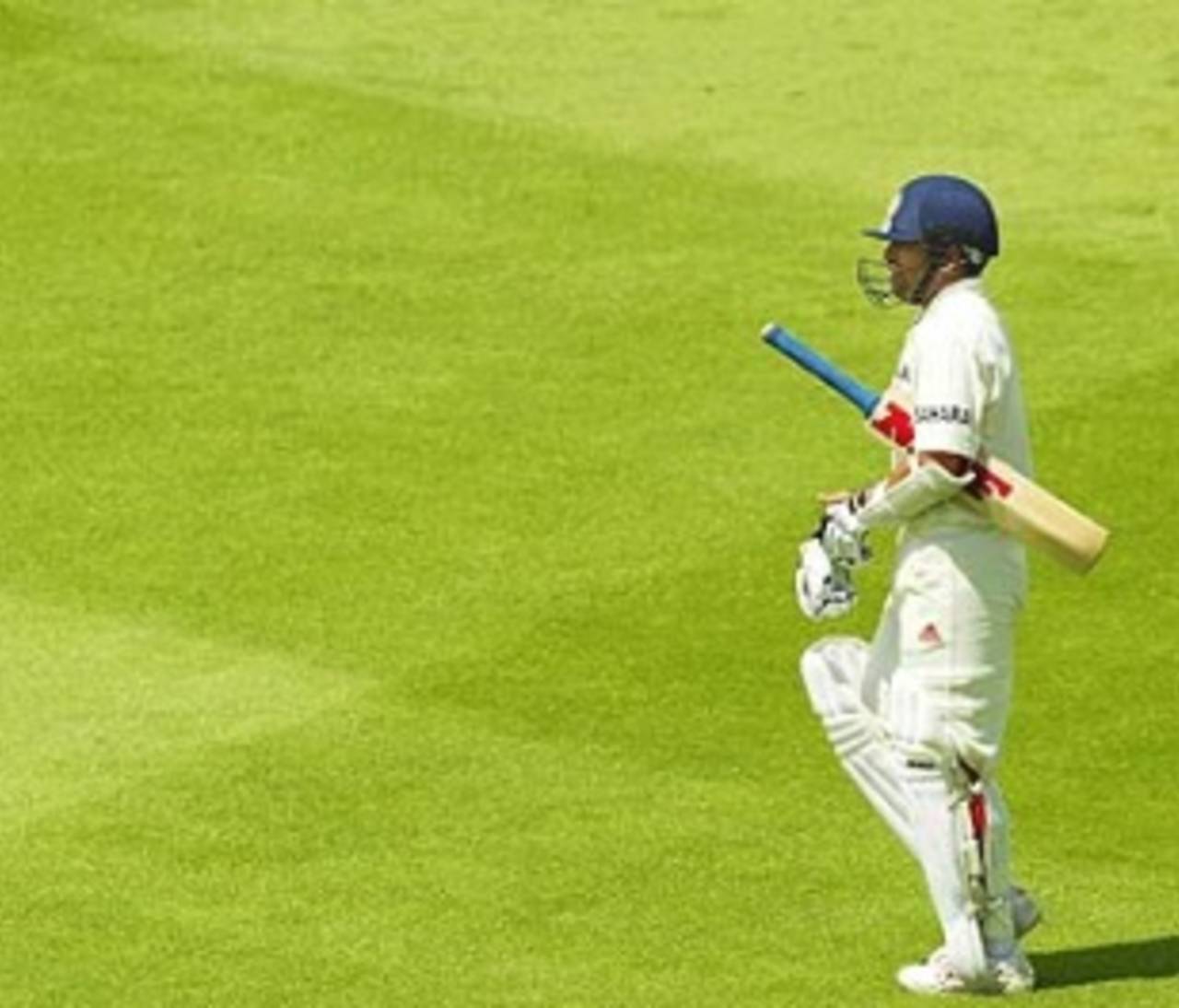For a reflection on cricket, its essential nature, try the intriguing documentary on the footballer Zinedine Zidane, A Twenty-first Century Portrait. Seventeen cameras follow the great Frenchman - and him alone - through the length of a match. There are no embellishments other than interludes of a dreamy background score, sometimes accompanied by subtitles of Zidane's abstract thoughts on the experience of playing. The result is a meditation on the shaolin art of a singular sportsman, and indeed sport.
Zidane is beautiful. His body is a ridiculous mix of strength, speed and litheness. His face is as chiselled and imposing as something on Rushmore. Only a face like his - strong bones, deep creases, the intimation of an uncontainable force - can hold together a whole film, as Daniel Day-Lewis did when he appeared in virtually every scene of There Will Be Blood. He even perspires attractively, without desperation.
Novel as it is watching Zidane, it occurs to you that this sort of compulsive focus on a single player is less unusual in a long, slow sport like cricket. Captains are routinely the subject of visual scrutiny. When the game is getting away from a fielding side you see them losing their cool or their spirit. You see them chiding fielders, glaring at bowlers, throwing their heads back in resignation or trying to look dementedly busy. Sourav Ganguly crinkled his nose, Steve Waugh chewed gum, Ricky Ponting spits into his hands, Graeme Smith makes like a grumpy grizzly bear. It is part of the story.
Conversely, during a collapse, the spotlight burns on the batsmen. A big occasion: Will they be heroes? The fielders are chirping, the pitch is misbehaving, the crowd is abuzz. More than the situation, you are alive to the response of people thrown into the situation. It is why writers from Wodehouse to Pinter have been drawn to cricket.
This is a fundamental point. Cricket and football are both 11-a-side games. Yet cricket is only nominally a team sport. It is cumulative rather than collaborative. Each delivery is an isolated event, a classic one-on-one duel. If anything, it can be argued, this one-on-one is more exaggerated in cricket than in an individual sport such as tennis. When a batsman and a bowler take on one another, the roles of the fielders and the non-striker are solely that of support, making a kind of ceremonial durbar in which the two participants hold forth.
When the game is getting away from a fielding side you see them losing their cool. You see them chiding fielders, glaring at bowlers, throwing their heads back in resignation or trying to look dementedly busy. Sourav Ganguly crinkled his nose, Steve Waugh chewed gum, Ricky Ponting spits into his hands
In every such duel, the individuals stand for their whole team to such a degree that they are the team itself. This, CLR James has written, offers cricket its special dramatic quality. The dramatist, the novelist, aspires to make the individual symbolic of the collective; the structure is given to cricket.
Watching Zidane isolated in the hurly burly of a football game, one senses also the peculiar solitude of the sportsperson. "You can almost decide for yourself what you want to hear," the subtitles say at one point. "You are never alone. I can hear someone shift around in the chair. I can hear someone coughing. I can hear someone whisper in the ear of the person next to them. I can imagine that I can hear the ticking of a watch."
In spite of the "you are never alone", these sentences, especially the ticking of the watch, rather than amplify the sense of surround, suggest a man alone. A footballer must at least be on the move, give position, carry on a continuous interaction with his team-mates. For a batsman the sensory experience of the outside world intruding on a private space is even more intense. Every delivery is a personal rehearsal. Cricketers listen to the voices in their head and try to block them out; the chatter of opposition, and try to block that out; the sounds of the stadium, and block that out. Unlike football, dynamic, fluid, collaborative, there is little scope for recovery. You cannot sprint back 30 yards or rely on a team-mate if you nick a ball. If you're gone, you're gone. You must sit in the dressing room and contemplate, watch others play, a whole different solitude.
The final thing that strikes you is the nature of the physicality of the two sports. Football, with its constant movement, requires a brutal level of general fitness, and it is a contact sport. Cricketers need only be cricket-fit, and it is a non-contact sport (though it doesn't feel that way to anybody who's been bruised by a leather ball). Zidane jogs, he walks, he bides his time, he spits, he pulls up his socks, he makes sudden predatory bursts. At one point he deliberately lets his elbow thwack an opponent. Towards the end of the game he gets involved in somebody else's brawl and is red-carded, all the while stoic and brooding, presaging a famous send-off in the World Cup final a year on.
In cricket, of course, the mere sight of opponents brushing shoulders triggers worries about the end of civilisation. Yet, violent or not, it is the thrill of movement that viewers respond to in sport. An electricity sparks the trance-like narrative whenever Zidane breaks into a run. The sensation is similar to watching a great fast bowler, now resting, now gathering, now building up towards a climax - a climax that may or may not come. And it is this visual suspense that makes sport, particularly in the hands - or feet - of a champion, a cinematic experience.
Rahul Bhattacharya is the author of the cricket tour book Pundits from Pakistan. This article was first published in Mint Lounge
